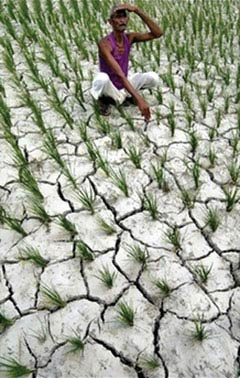Seeds of Suicide
By Chad Heeter | Oct 26, 2007

India’s economy has grown at an average annual rate of 6.8 percent since 1994, reducing poverty by 10 percent. However, 40 percent of the world’s poor live in India, and 28 percent of the country’s population lives below the poverty line. More than one third live on less than a dollar a day, and 80 percent live on less than two dollars a day.
India’s recent economic growth has been attributed to the service industry, but 60 percent of the workforce remains in agriculture.
The Indian government was forced to reform its agricultural policy in the late 1960s when an imbalance in food imports was exacerbated by two years of drought in 1965 and 1966. World Bank, the Rockefeller Foundation, and the U.S. Agency for International Development chipped in assistance to develop high-yield rice and wheat “miracle seeds.” These seeds, combined with the Indian government’s assistance with modern farm machinery, price incentives and a more efficient food distribution system, resulted in what came to be known as the Green Revolution.
The new seeds and fertilizers worked for many: India’s food production rose from 72 million tons in 1965-66 to 152 million tons in 1983-84, eliminating the country’s dependence on food grain imports. In addition to their planting the new seeds, farmers’ use of chemical fertilizers jumped from 1.1 million tons to more than 12.5 million tons in the first decade of the Green Revolution, and irrigated land grew from 74 million acres in 1965-66 to 111 million acres in 1988-89.
In the late 1980s, however, the Green Revolution began to fall apart as the chemical fertilizers rendered soil infertile. Farmers who had once diversified risk by growing as many as 30 different crops in their fields were dependent upon just one. As the quality of the soil deteriorated, they faced zero yields and an inability to pay their debts. Three years of drought beginning in 2001 further fueled the crisis.
Twenty-five thousand farmers have committed suicide under these circumstances since 1997. In the state of Andhra Pradesh alone, 4,500 farmers have committed suicide in the past seven years. This does not include the number of family members of farmers who have also killed themselves.
Sources: “Harvesting Death,” by Sarita Tukaram; CIA Factbook; Lonely Planet Guide: India; PBS; BBC.















